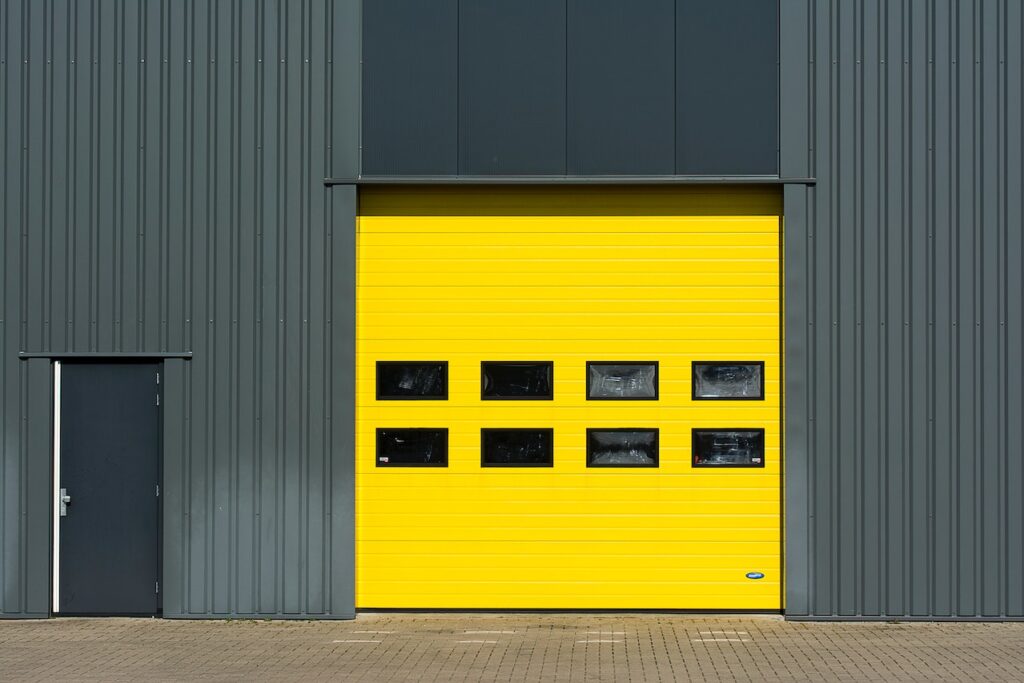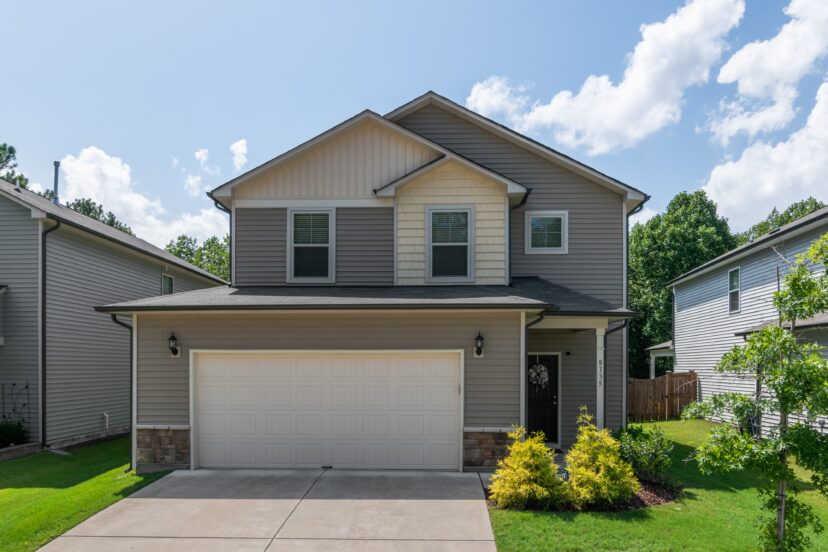Garage Door Hinges: Tips for Selection & Maintenance
Garage door parts have their own importance and ignoring their value can lead to operational glitches and potential safety concerns. Garage door hinges connect door panels and provide the necessary flexibility, enabling the door to fold at specific points. They also maintain the alignment of doors panels and without them, the door will jam and not close as intended. Garage door hinges also distribute the weight of heavy doors, especially the double-wide varieties. This distribution ensures that no single point endures too much strain, which could accelerate wear and tear or even result in it breaking.
Safety Considerations
Aside from their operational value, the safety aspect of hinges is also important. A malfunctioning hinge can lead to a door dropping without warning. Properly functioning hinges are a safeguard against such accidents. From a security standpoint, hinges are an important barrier against unauthorized entry. Compromised hinges can create a security loophole, potentially inviting burglars or trespassers. There is a peace of mind that comes from knowing your garage door hinges are in good shape and no accidents or safety issues that may arise from it. A reassurance of both optimal function and safety.
Different Types of Garage Door Hinges
Just as the doors themselves come in different styles and designs, so do the hinges that hold them together. Each type of hinge is designed with a specific purpose, let’s take a closer look at some of the most common types.
Standard Plate Hinges
Standard plate hinges are the most commonly used hinges, and there’s a good chance they’re the ones you have on your door right now. Crafted with durability and strength in mind, these hinges typically connect the sections of roll-up garage doors, allowing them to move smoothly. Their simplistic design ensures longevity and reduces the likelihood of malfunction. Often, they’re designated by numbers, like #1, #2, etc., to indicate their placement and function on the door.
Narrow Body Hinges
Narrow body hinges, as their name suggests, have a slender design. They’re crafted for specific garage door setups where space might be a limiting factor. These hinges are particularly suitable for doors with a tighter radius of curvature.
Wide Body Hinges
In contrast to their narrow counterparts, wide body hinges are broader and built to provide an extra layer of support. They are made for larger or heavier garage doors; their wider design ensures better weight distribution, reducing the strain on any single part of the door. They’re particularly beneficial in preventing door sagging, a common issue in bigger garage doors.
Strap Hinges
Strap hinges are typically used for swing-out or side-hinged garage doors. Though they are thinner than other hinges, they are made of robust materials.
Installation Tips for Newbies
For those who are new to the DIY world of garage door maintenance, don’t worry. Here are tips and a step-by-step guide to install your garage door hinge.
Precautionary Measures
Before diving into the installation process, it’s essential to prioritize safety. Garage doors are heavy and contain many parts that, if not handled correctly, could lead to injuries.
Disconnect Power: If you have an automatic garage door opener, always start by disconnecting it. This ensures the door won’t activate accidentally during the installation.
Wear Protective Gear: Always wear gloves to protect your hands from sharp edges. Safety goggles are also a good idea, especially when you’re working with tools to prevent any flying debris.
Secure the Door: Before you begin, prop open the garage door securely. This can be done using locking pliers or C-clamps on the tracks beneath the lowest rollers. This ensures the door won’t come crashing down.
Work with a Buddy: Garage doors are hefty, and some tasks are easier and safer with an extra set of hands. If possible, ask someone to assist you.
Keep Tools and Materials Organized: Having all your tools and new hinges laid out and within easy reach can make the process smoother and minimize the risk of mishaps.
Step-by-Step Guide
Once you’ve taken the necessary precautions, you can proceed with the hinge replacement or installation:
1. Assess and Mark: Start by identifying the old or damaged hinge you want to replace. If it’s a new installation, decide where the hinge will be placed and make a small mark.
2. Remove the Old Hinge: Using a wrench or screwdriver, carefully remove the screws or bolts holding the old hinge in place. Hold onto the door panel as you do this to ensure it doesn’t shift or fall.
3. Align the New Hinge: Place the new hinge in the designated spot, ensuring it aligns perfectly with the screw holes. If it’s a replacement, it should fit right into where the old hinge was.
4. Secure the Hinge: Screw or bolt the new hinge into place, making sure it’s tight and secure. Avoid over-tightening, as this can damage the hinge or door panel.
5. Test the Door: Once the hinge is installed, carefully test the door’s movement. It should open and close smoothly. Listen for any unusual noises and ensure the door panels align correctly.
6. Reconnect Power: If you disconnected an automatic opener, remember to reconnect it after you’re done.
7. Regular Maintenance: Now that you’ve successfully installed the hinge, make it a habit to periodically check on all the hinges for signs of wear, rust, or damage.

Maintenance and Troubleshooting
Maintaining your garage door hinges ensures they operate without a hitch and extends the life of your entire garage door system. Like every other component, hinges require periodic checks to keep them functioning and hazard-free.
Regular Checks
Routinely inspect your hinges so you can spot and rectify minor issues before they escalate into more significant problems. Start with a visual examination of your garage door hinges every month, watching out for any signs of wear, rust, or damage. Pay attention to the sounds your door makes. A squeaky hinge often just needs some lubrication, while a grinding noise might suggest it needs a replacement.
Check on Amazon: WD-40 Specialist Penetrant & 3-IN-ONE Garage Door Lube Combo Pack
It’s also beneficial to operate your garage door manually from time to time to feel any irregularities in its movement. Doors should open and close seamlessly without any unexpected jolts. Another aspect to monitor is the tightness of the screws or bolts securing the hinges. They can loosen over time, so ensure they’re snug but avoid over-tightening which can lead to other problems. Depending on your hinges’ material and type, they might benefit from occasional lubrication. Always opt for a lubricant that’s recommended for garage doors to get the best results.
When to Replace?
Despite your best maintenance efforts, there will come a point when your hinges will need a replacement. If you notice that a hinge appears bent, warped, or has sustained any significant damage, it’s a clear indication that a replacement is necessary. If you’ve tried lubricating a noisy hinge and it continues to squeak or if there’s a grinding noise, it might be time for a new hinge. Rust and corrosion are other telltale signs. Hinges, unless made of rust-resistant materials, can succumb to corrosion over time. Another symptom of a failing hinge is a misaligned door. If the door panels don’t align correctly and the problem can be attributed to a hinge, it’s best to replace it. Lastly, consider the age of your hinges. Their lifespan isn’t infinite, and if they’re old or causing frequent issues, it might be wise to replace them even in the absence of visible damage.
Conclusion
Garage door hinges are important components of your garage door. From understanding their importance in door operations and safety to familiarizing oneself with various hinge types, making the right choice is essential. Regular maintenance, coupled with recognizing when a replacement is due, can prevent potential complications and ensure the door’s longevity. Taking care of your garage door hinges is an investment in the prolonged efficiency and safety of your garage system.
FAQs
1. What is the primary function of garage door hinges?
Garage door hinges allow the door to fold at specific points, ensuring smooth movement when it opens or closes.
2. How often should I inspect my garage door hinges?
It’s recommended to conduct a visual inspection of your garage door hinges at least once a month.
3. When should I replace my garage door hinges?
Hinges should be replaced if they show visible signs of damage, persistent noises even after lubrication, rust, misalignment, or simply due to old age.
4. Can I install or replace garage door hinges myself?
Yes, with the right tools and precautions, you can install or replace garage door hinges. However, if unsure, it’s always best to consult with a professional.
5. What are the most common materials used for garage door hinges?
The most common materials include steel, stainless steel, and occasionally brass or bronze, each with its unique advantages and considerations.




